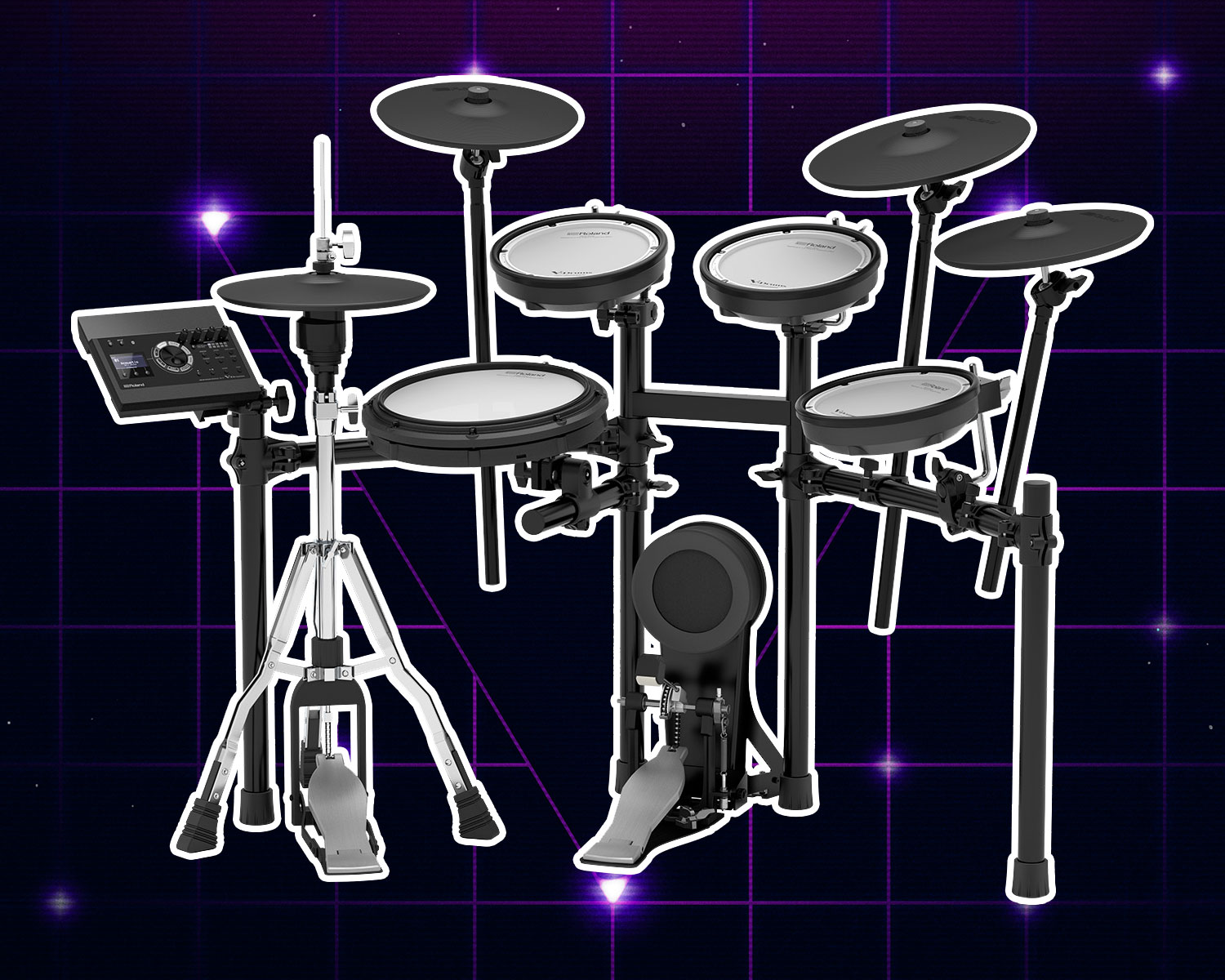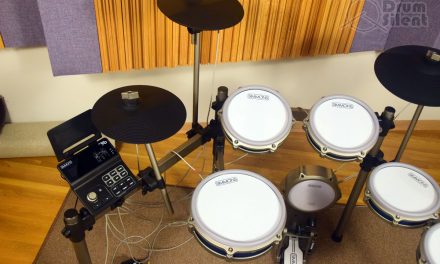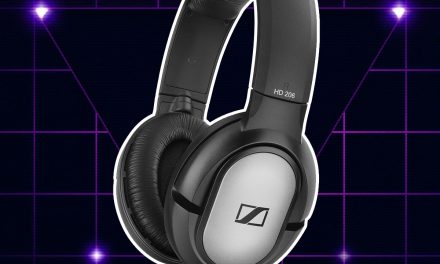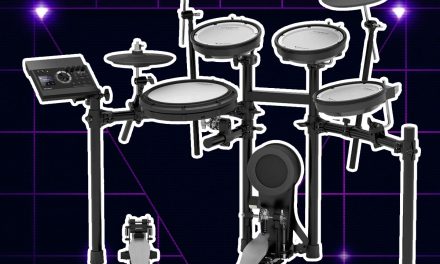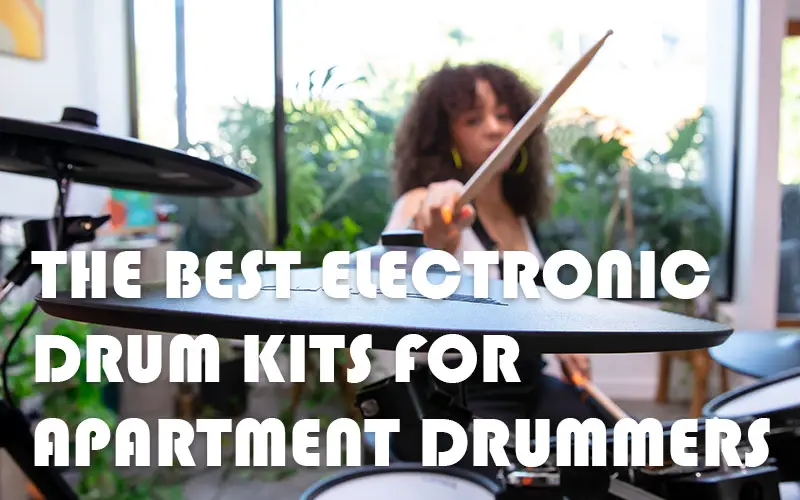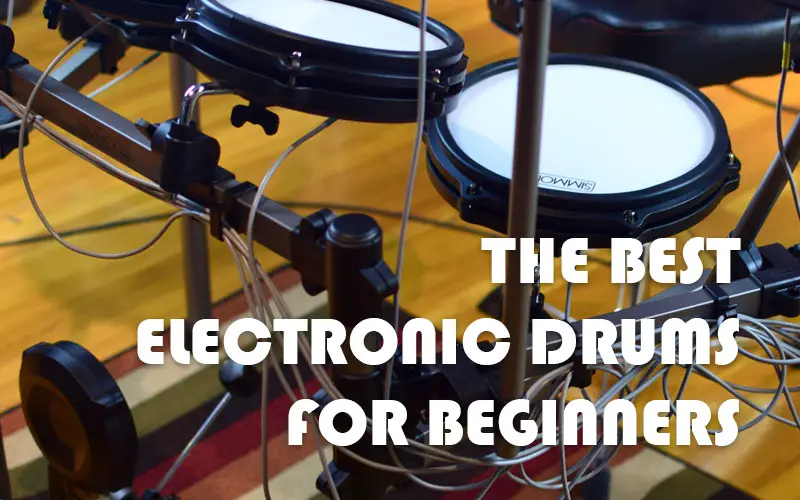NOTE: There is a newer, second generation version of this drum kit that is now available, the Roland TD-17KVX2.
The Roland TD-17KVX is best described as a compact value kit from Roland that is still a lot better than the cheapest budget kits out there. There’s a lot of great features here that make this kit very fun to play. You also start to scratch at some pro-level features here as well. Let’s take a look what’s good and bad about this drum kit.
Check Pricing or Buy Now
Amazon
Guitar Center
Reverb
Drum Pads & Cymbal Pads
The pads on this kit are on the small side, but they are packed with some good features. They are some of the more no-frills pads but they play well. The snare and the hi-hat are probably the standout pads on this kit, with the rest being good but not great. Let’s take a look at the pad lineup.
Multi-Zone Drum Pads
The snare pad is a really nice pad to play.The snare pad is a dual trigger PDX-12 mesh pad – 12 inches in diameter. So it’s two inches smaller than a traditional snare size. The head and the rim can both generate different sounds. The head is a two-ply mesh head, which can be adjusted to have more or less rebound like a normal drum head – so you can dial it in to your preference. Play-wise, it feels really good during play and the response around the surface of the head is pretty even.
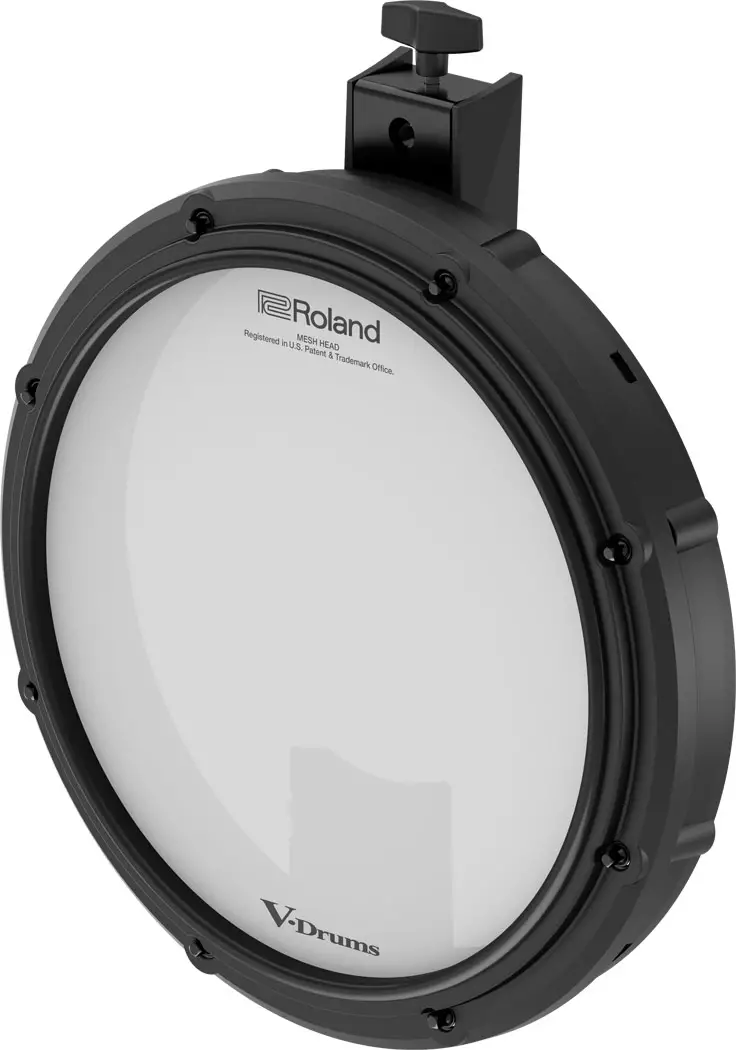
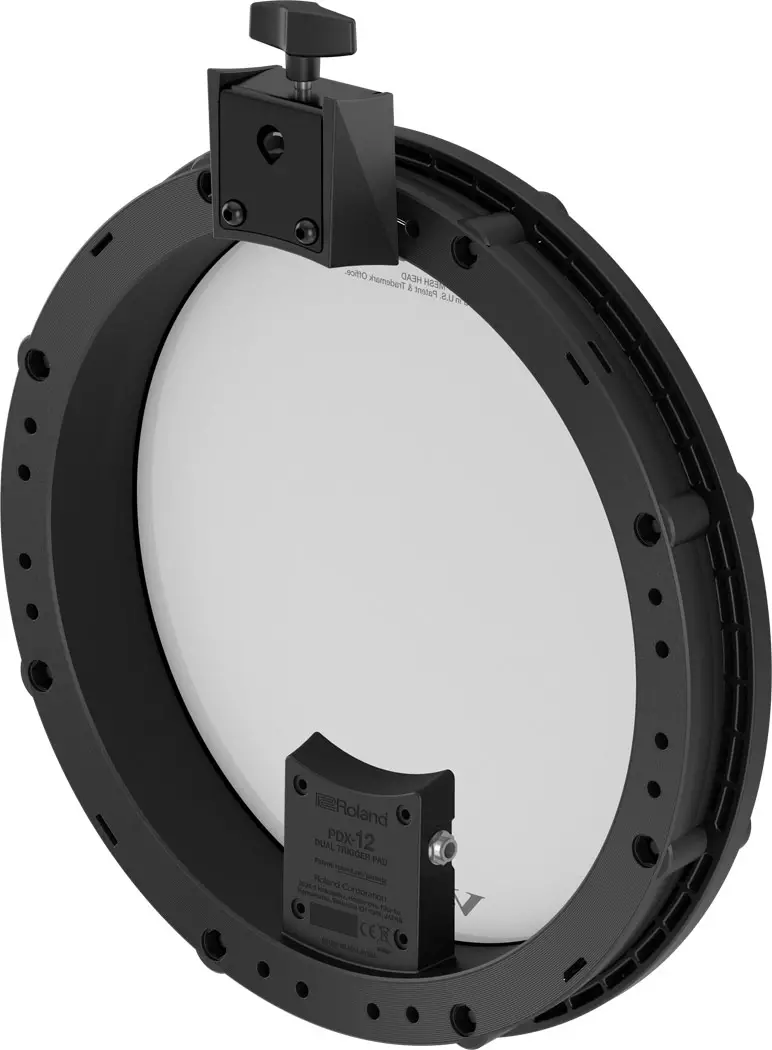
The tom pads are pretty standard dual-zone mesh pads. All three toms are the PDX-8 pads from Roland. These pads offer an 8-inch diameter pads surface. It’s kind of a small target. The response of the heads feels really good during play, much like the head of the snare. However, there is a white plastic rim inside of the out rim, which can get in the way during play. It also makes the hit zone on the pads a little smaller. It’s kind of strange and awkward sometimes during play. The outer rim is what triggers the second zone on the pad when hit. You can assign cymbal sounds to the rims of the toms to expand the size of your kits without adding more cymbal pads.
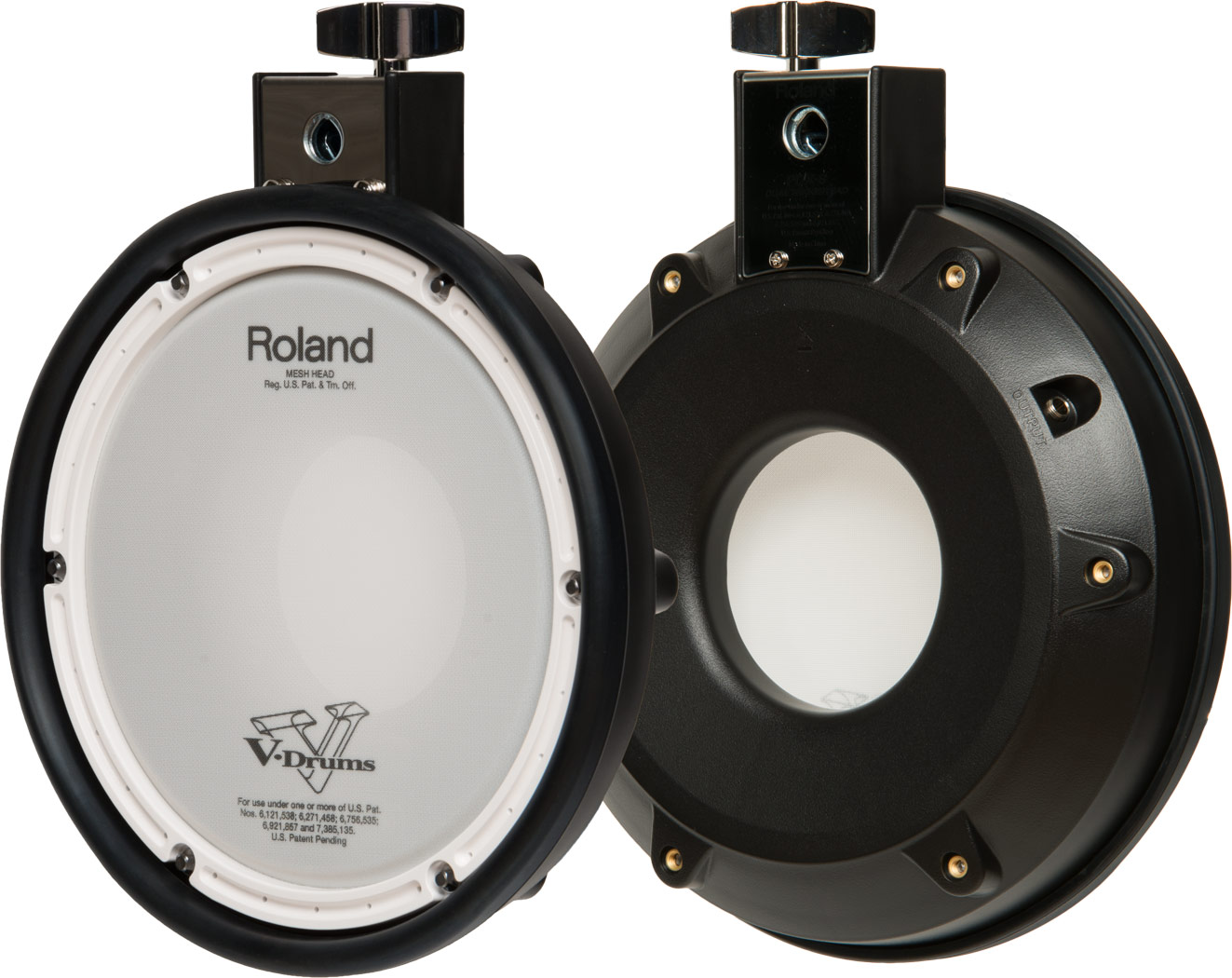
Multi-Zone Cymbal Pads
This kit comes with some nice intermediate level Roland cymbal pads. They are very playable, but not quite on the level as some of the newer digital cymbal pads on more expensive kits. They are rubber-surfaced and they feel like what you’d expect in terms of rebound and sticking feel.
The ride cymbal is a nice three-zone, 13-inch cymbal pad. The CY-13R pad is designed to sway like an acoustic cymbal during play, and has good response across all three zones. You can generate sounds from striking the edge, the bow and the bell separately. This pad also offers choke control by grabbing the nearest edge of the cymbal. The smaller size might be a drawback for a true ride cymbal feel, but the playability is there with this pad.
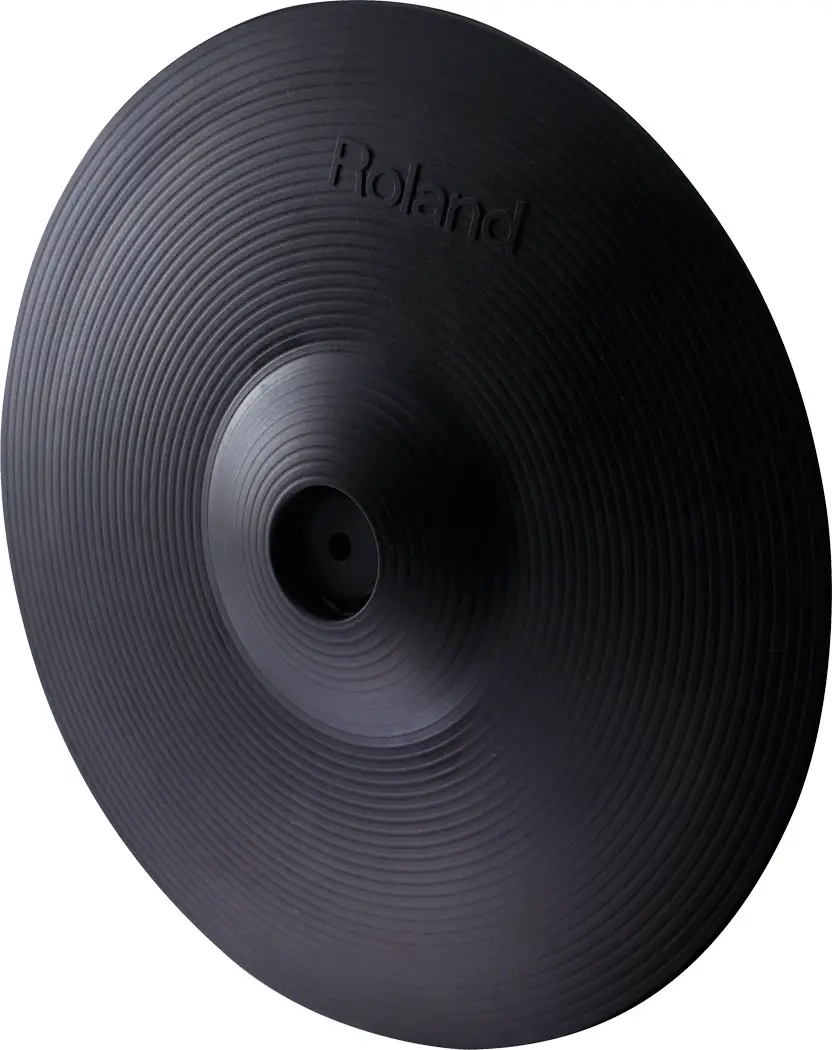
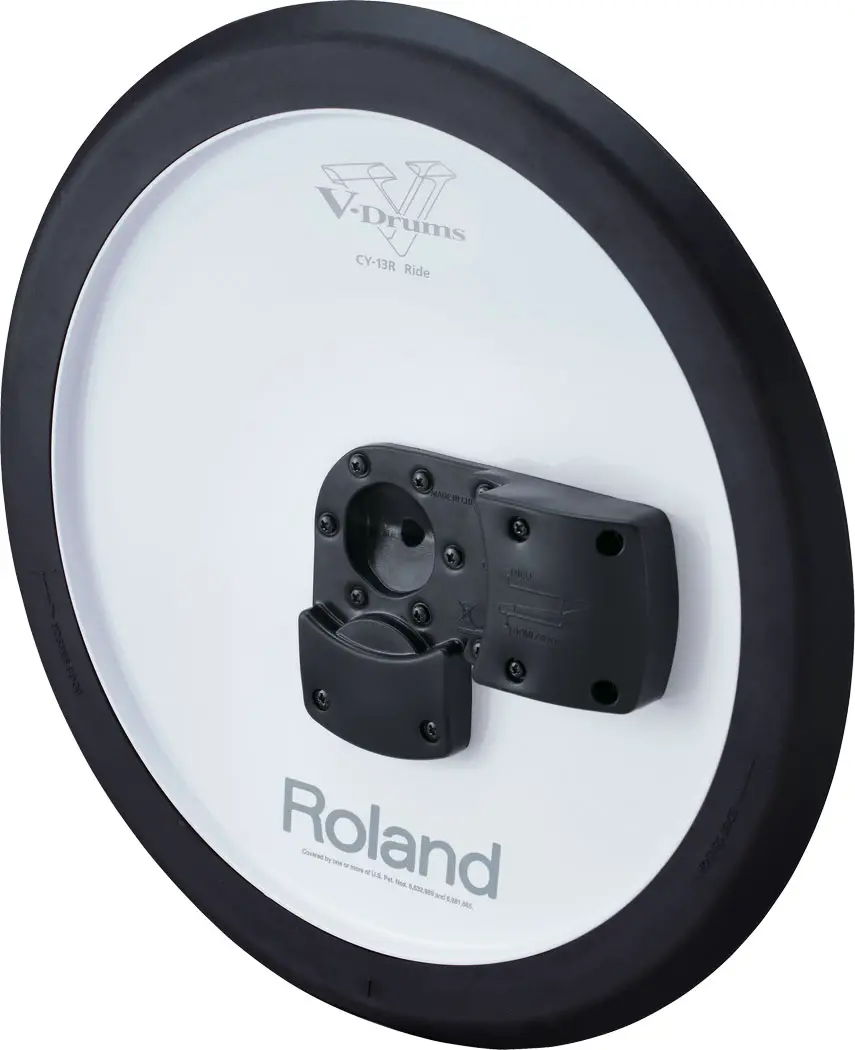
The crash cymbals are both dual-zone, 12-inch rubber cymbal pads. The CY-12C pad is designed specifically for use as a crash pad. It’s designed to sway like an acoustic cymbal, much like the ride pad on this kit. The two striking zones are the edge and bow. These pads do not have a bell zone. The choke control on these pads works by grabbing the nearest edge.
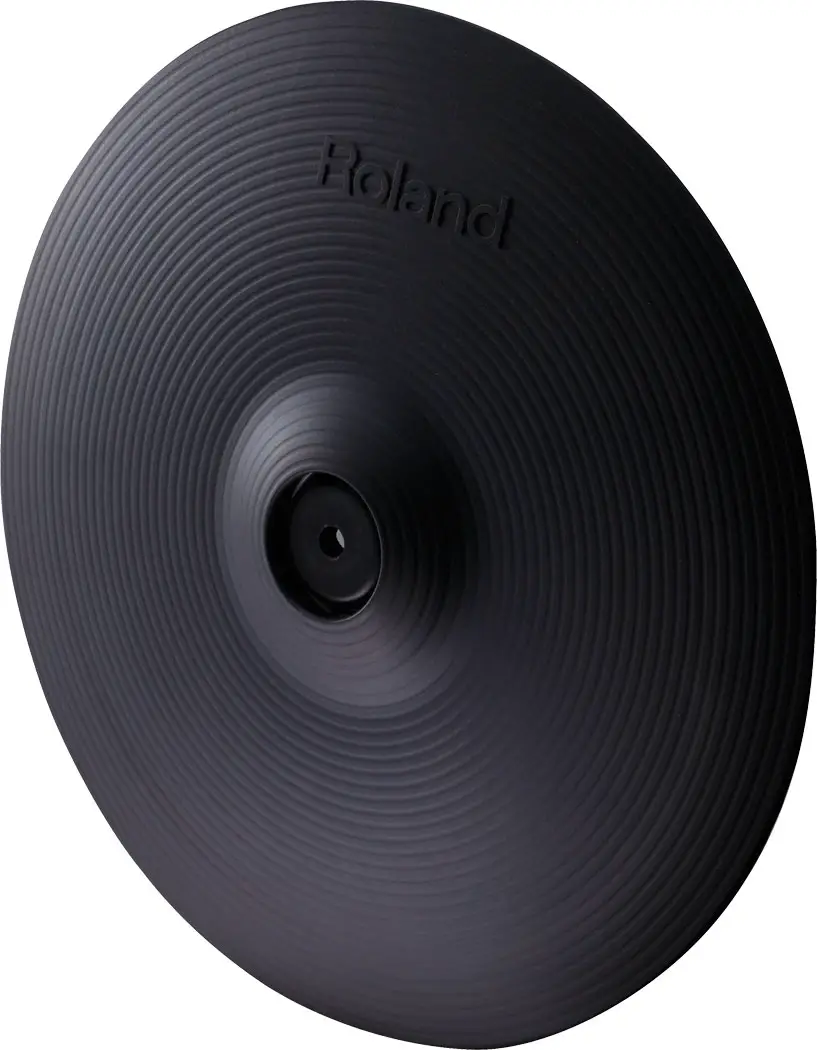
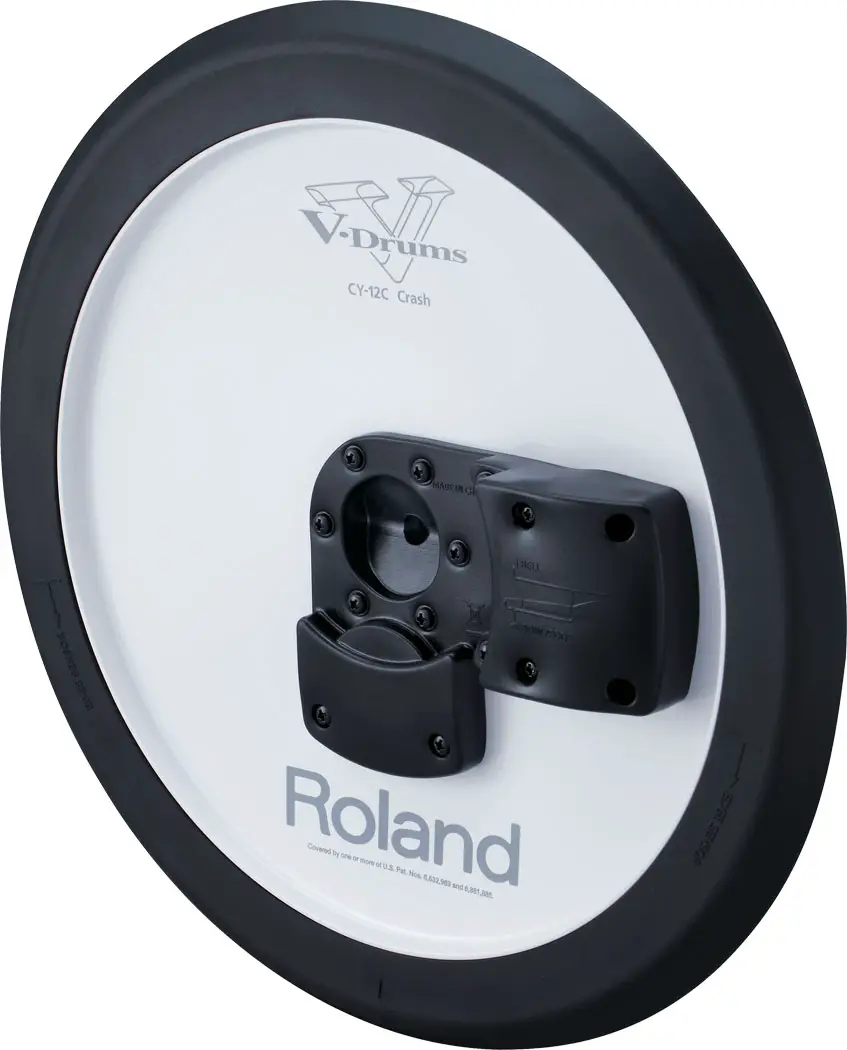
The 10-inch hi-hat pad mounts on a standard hi-hat stand and plays great. The VH-10 hi-hat pad is common on a lot of the mid-range Roland kits, and for good reason. It’s affordable and it offers nice flexibility in play. You can generate sounds from the edge and bow. The pad can generate all the sounds in between closed to open. You can also generate foot splash sounds like an acoustic hi-hat. There’s even a choke control on this pad. The fact that it mounts on a hi-hat stand makes the foot action feel much better than the electronic foot pedals that come with cheaper kits.
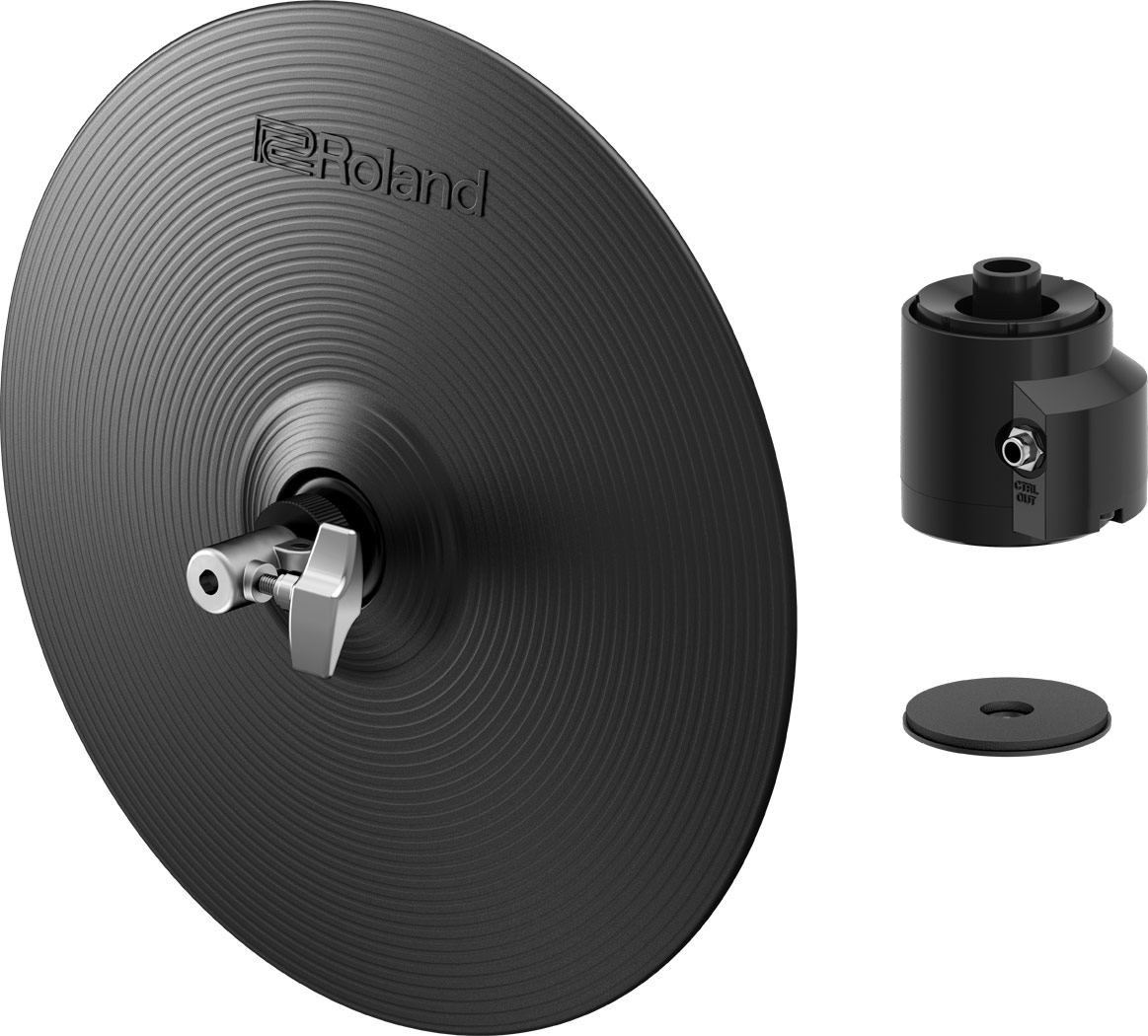
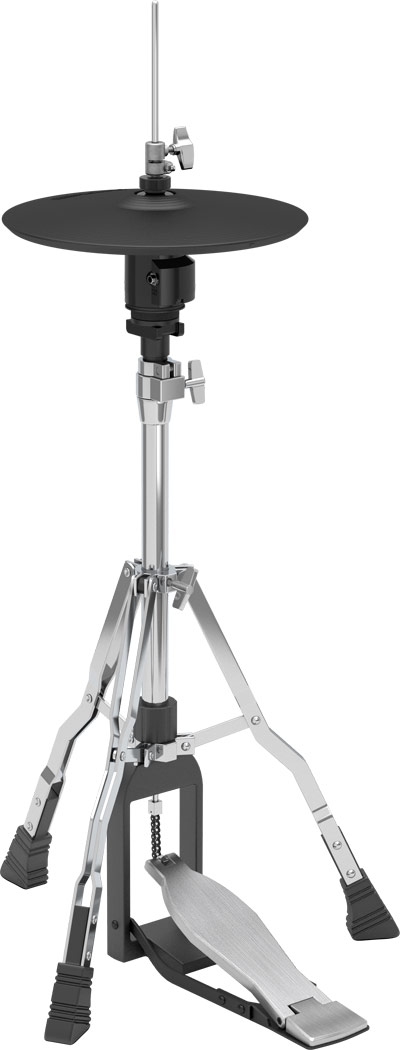
The Kick Tower Pad
The kick tower gets the job done but it also pretty basic. It has a good feel when striking the surface. It feels somewhere in between a practice pad and a real kick drum head in terms of how much it gives during striking. It is just big enough to fit a double kick pedal if you use double kick. The responsiveness of the pad is good enough for double kick players as well. The pad has spurs to help keep it from sliding when used on a thick, heavy rug or carpet.
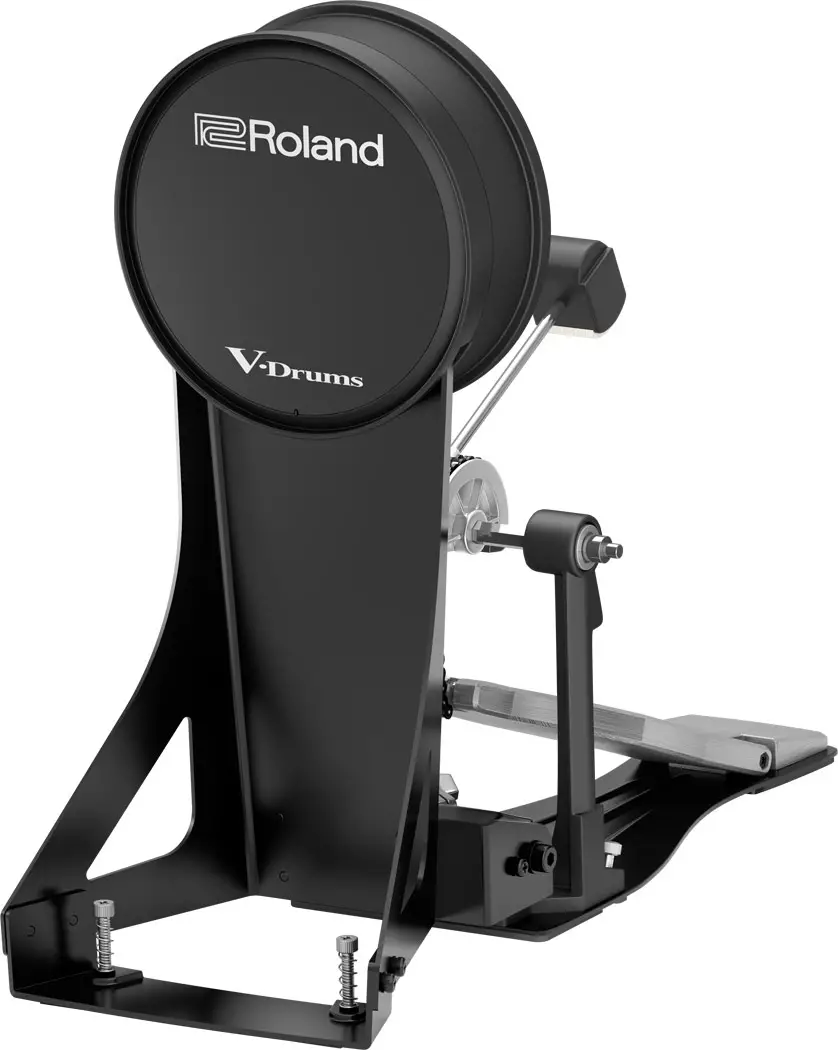
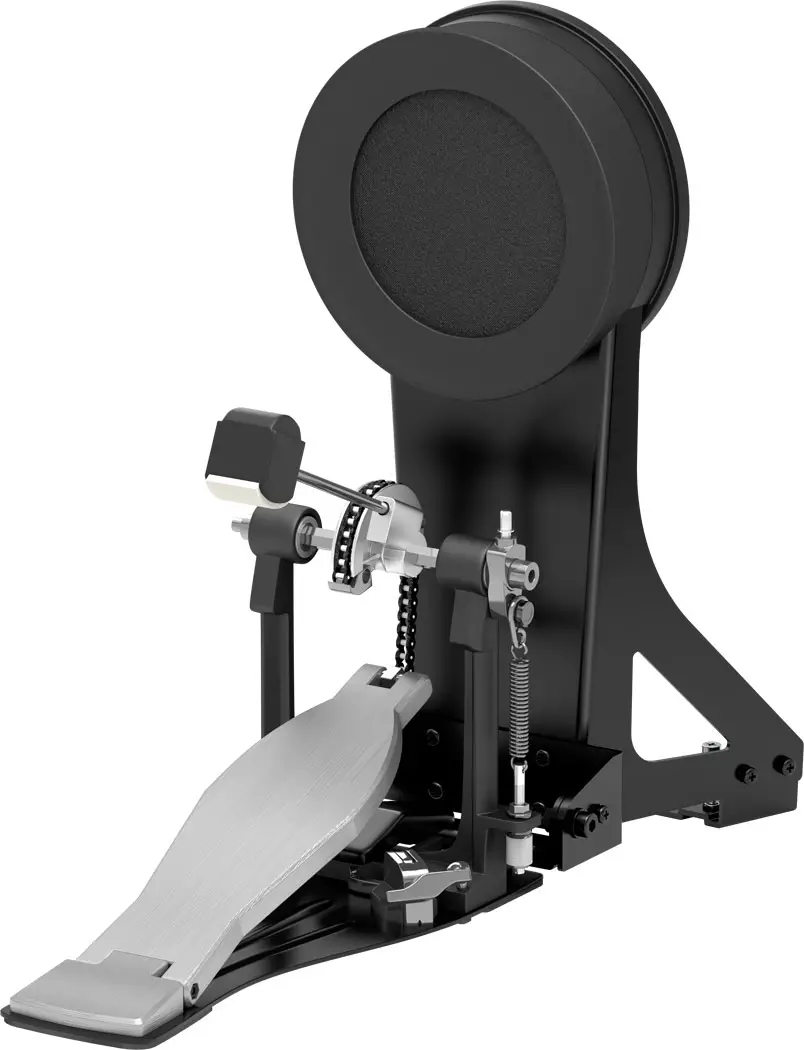
Adding More Pads
There are two additional trigger inputs, one labeled “Crash2” and one labeled “Aux”. Both can be used to add additional pads to the kit.
The Rack
This kit uses one of Roland’s more compact racks – it’s workable but limiting. The rack that is currently included with this kit appears to be the MDS-Compact rack. It’s a peculiar rack in that it doesn’t offer a ton of flexibility in how to set up the pads. There’s also no true boom arms on the cymbal arms, but it seems to work out ok for setup. The pad mounts, while a little limited in terms of overall positioning, are all designed to rotate and tilt – so that’s a good thing.
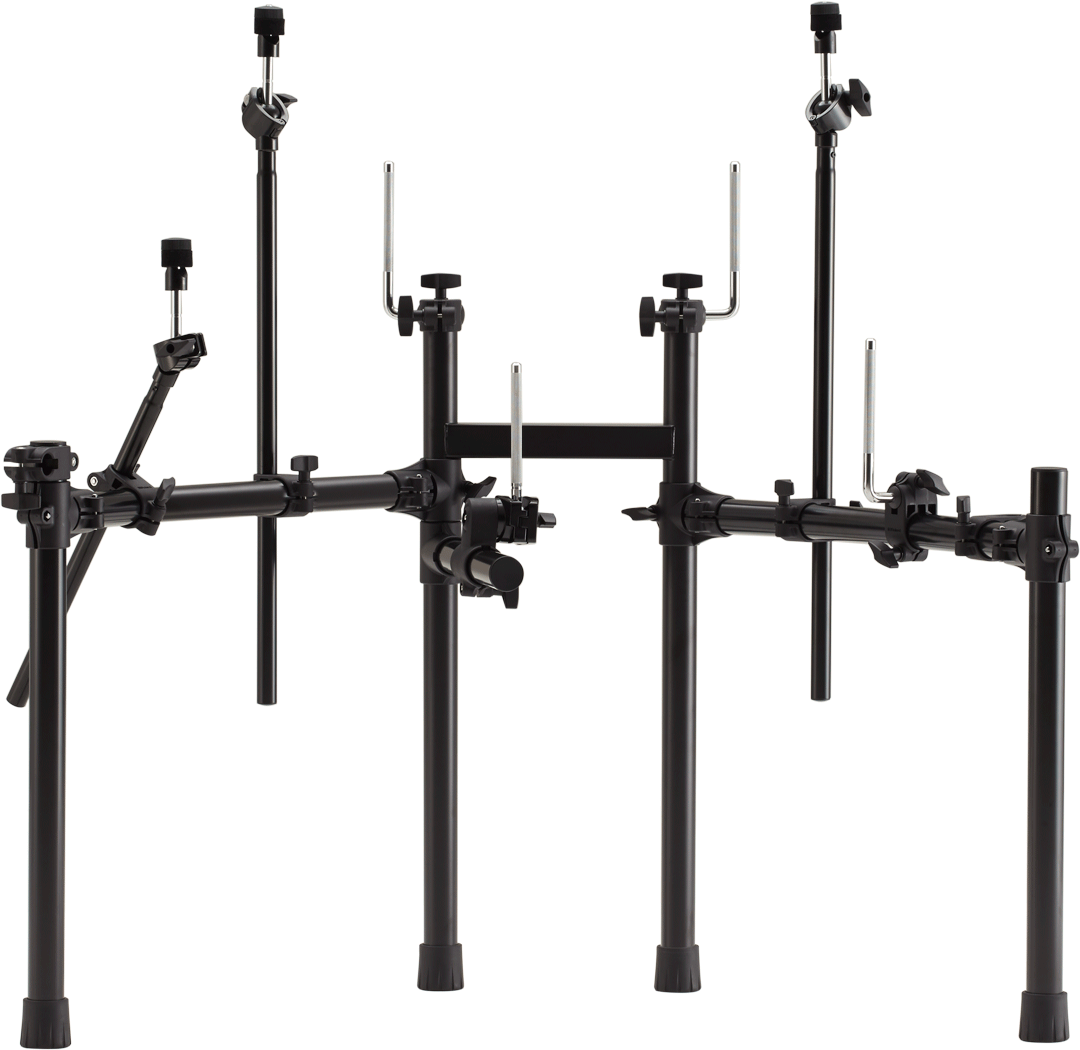
It should be noted that there are some images and videos out there that show this kit with a different version of the rack. Sometimes you will see the MDS-4KVX rack on this kit. This is the version of the rack with the boom arms for the cymbals. If the exact rack is important to you, we’d recommend contacting the vendor before buying to ask them which version of the rack appears to be on the kits they have in stock.
Sturdiness
The MDS-Compact rack is actually quite sturdy for a small, lightweight rack. It sits in place nicely while you are playing across all the pads on the kit, and there’s no excessive or annoying wobble. It helps to have the hi-hat and the kick pad mounted independently from rack, which keeps it balanced.
Feel & Playability
Even though it’s compact in size and uses mostly low to mid-tier Roland pads, this kit plays very well. The feel of the pads is the best quality, even though the pads are smaller in size.
The snare pad plays great and drummers with high demands from their snare pads should find it to be satisfying. Of course there’s better options out there, but at it’s price point it’s hard to beat the feel of the PDX-12 snare.\
The multi-zone pads around the kit give you a lot of sound flexibility, which can make playing this kit very satisfying. You can assign cymbals to the tom rims to expand the range of cymbals on your kit with no extra pads. You can get really good head and rimshot sounds from the snare. The ride has nice edge, bow and bell sounds for a realistic sound. Overall, the multi-zone pads are a huge plus for this kit over it’s cheaper competitors.
The hi-hat pad is another huge plus on this kit. Being able to mount it on a hi-hat stand makes it feel much more like an acoustic kit in terms of how it plays. The response from the various uses of the pad is natural enough that you can play it like an acoustic hi-hat.
The TD-17 Sound Module
Roland has designed the TD-17 module specifically for this line of drum kits. Roland will tell you that it’s a stripped down version of the TD-50 module. But that might not mean much to drummers who have never used the TD-50 module. Overall the TD-17 module is pretty nice. It’s designed more with practicing in mind, but is good enough to be used for live performances if called upon.
This module has a total of 100 drum kits, with 70 built-in preset kits and 30 custom user kit slots. The sounds are not the same as the TD-50 module, but there are 310 built in sounds and voices that are utilized throughout the preset kits. This module also allows you to load up to 100 of your own WAV samples via SD card.
Interface
Like other Roland modules, this one is pretty easy to dive into and use without even reading the manual. Buttons do what you expect and the typical module options are all there. Let’s take a closer look.
On The Top:
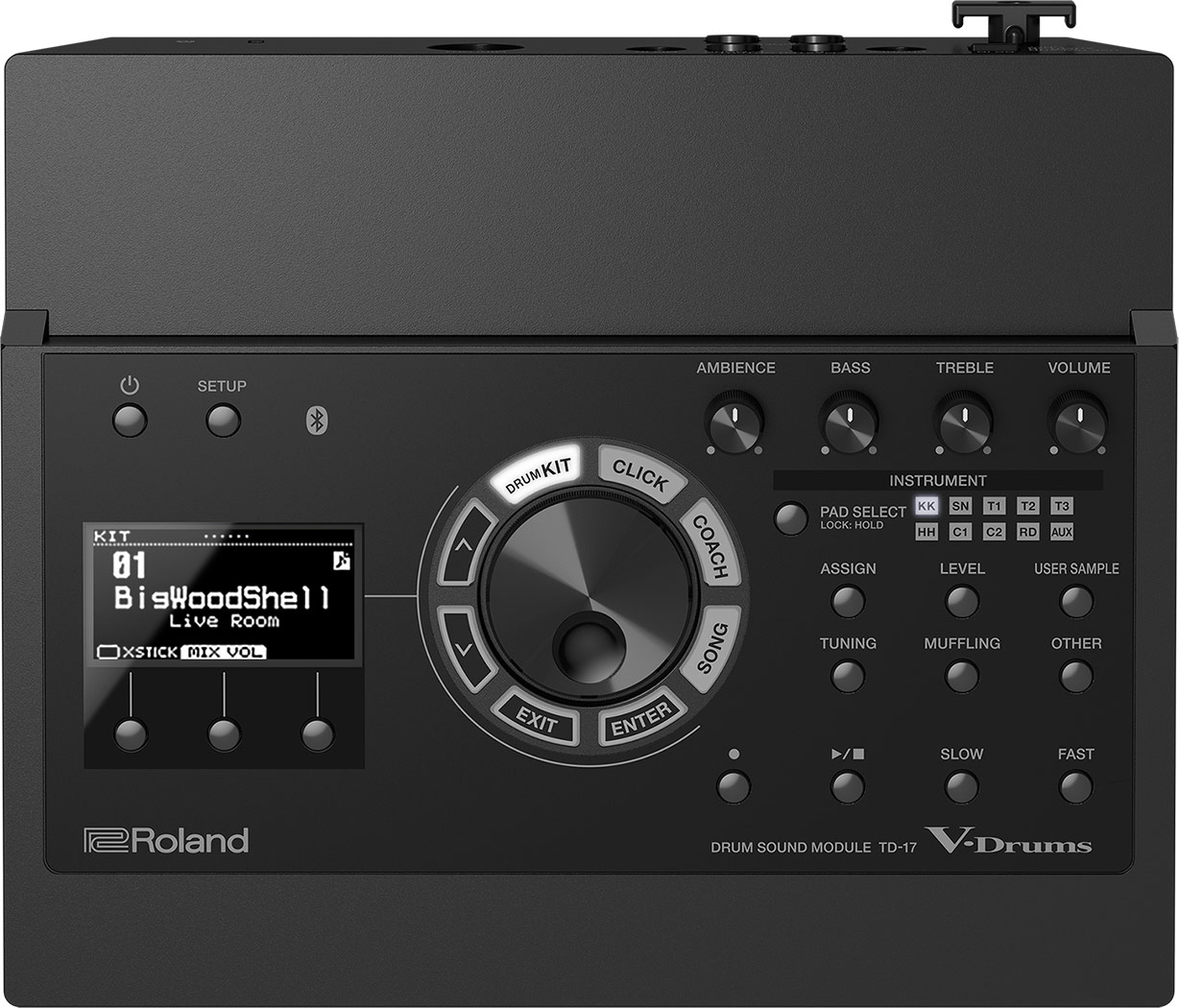
- Power Switch
- Setup Button – Brings you into general configuration settings for the kit
- Digital Display – Shows kit, instrument and other settings during use
- Function Buttons – Correspond to options on the digital display
- Exit/Enter/Arrows/Dial – Used to navigate menus and select options
- Record/Play/Stop buttons – Used for song mode to record your performances
- Click Button – Enter click mode and settings
- Coach Button – Enter coach mode and training features
- Song Button – Enter Song mode and play along with songs
- Ambience Knob – Adjusts kit ambience
- Bass/Treble Knobs – Quick adjust instrument or kit EQ
- Volume Knob – Master volume level of the module
- Pad Select – manually select a pad or hit a pad to select
- Assign Button – assign a new voice to the pad
- Level Button – change level for selected voice
- User Sample – load a user sample to selected pad (from SD card)
- Tuning – Tune the selected pad voice up or down in pitch
- Muffling – Add or remove muffling from selected pad or voice
- Other – Select deeper pad settings
On The Back:

- DC In Jack for Power Supply
- Headphone Jack – 1/8″
- Master Outputs – Stereo 1/4″
- Mix In Jack – 1/8″
- (2) Trigger In – For additional pads
- MIDI Out
On The Side:
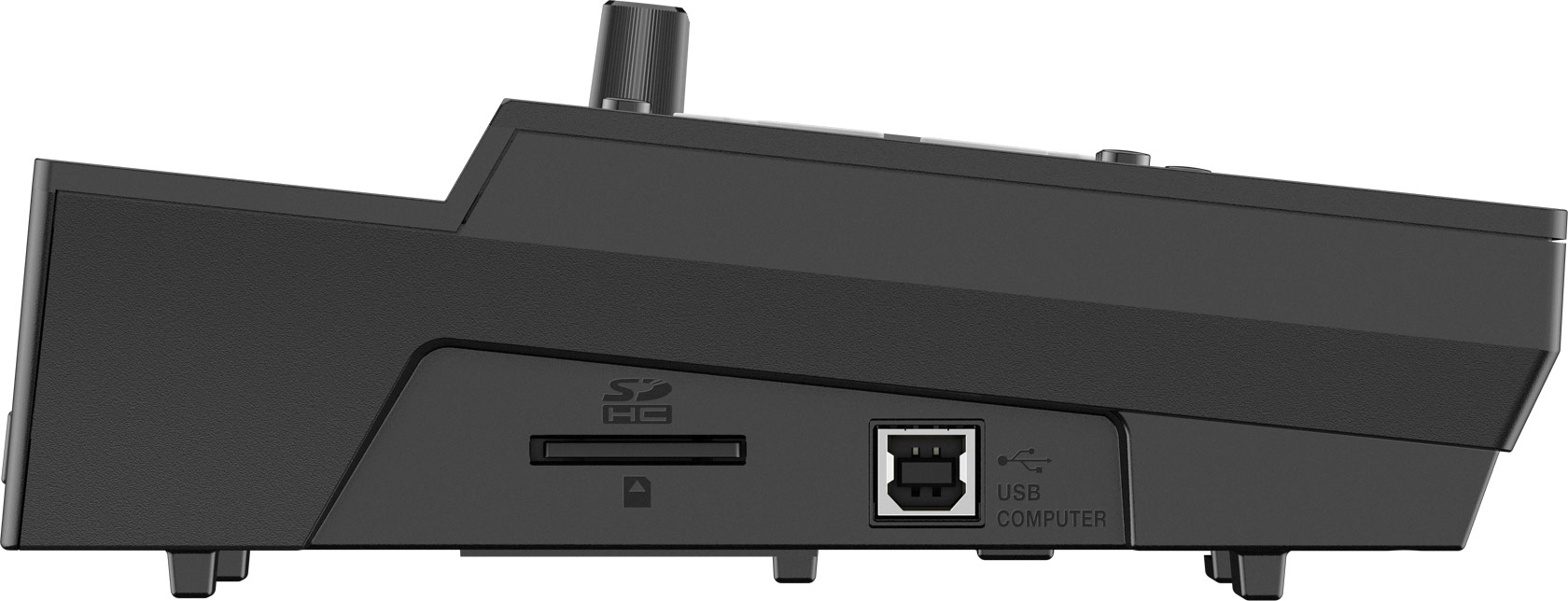
- SD Card Slot
- USB Computer Port
On The Bottom:
- Cable snake connection which includes cable connectors for all pads included with the kit.
Setup & Configuration
This module has a single button for Setup. Entering setup mode allows you to adjust all of the typical configuration options you’d expect to find on a drum module. From here you can do things like:
- Select a different type of hi-hat pad (if you upgrade from the included VH-10 pad)
- Adjust how the Bass/Treble knobs control frequency ranges
- Edit pad settings such as setting the type of pad used for each instrument and pad sensitivity
- Backup/load the module data to/from an SD card – includes module settings and custom kits
- Edit MIDI settings
- Enable auto-off which automatically turns off the module after a period of inactivity
- Adjust display contrast
- Display the system info
- Do a factory reset to bring the module back to factory defaults
Selecting a Kit
To select a kit, simply press the Kit button and start turning the dial to choose the kit you want to play. Easy enough.
Saving a Custom Kit
If you start to modify the sounds of a kit, or load in new samples to replace sounds on a kit, you can save the new kit to one of 30 user slots. The kit saves all the sounds and effects settings along with it.
Tweaking Sounds
This module doesn’t have a ton of sound design options like more expensive modules, but it does allow you to tweak the sounds quite a bit to get things to your liking.
Individual voices and instruments can be changed by adjusting the Volume, Panning, EQ, Tuning and Muffling.
You can create space and ambience through the kit by adjusting the Ambience settings, which are more or less advanced reverb settings. Rather than just changing basic reverb parameters, you can select options such as room size, room type, wall materials and more. Pretty slick.
You can assign one or more of the internal multi-effects to the kit. Once multi-effects are assigned, you can adjust how much effect is on each of the pads around the kit.
You can assign pads to specific MIDI notes – this is useful if you are using this drum kit as a controller for sounds on a computer.
PureAcoustic Ambience Technology
We have to mention this specifically, since it’s unique to Roland sound modules. This basically is just Roland’s way of letting you adjust the ambience around your kits. Many of the settings available for kit modification involve adjusting room and overhead mic placement and room type/size. This is Roland’s way of putting a name on that.
Playing Along With Songs
This module includes built-in songs if you just want to plug and play. Most drummer will want to play along with songs they like though.
To play along with the built-in songs, you can simply enter song mode, choose a song and start playing.
To play along with your own songs, use the Mix-In input or the Bluetooth option to connect a device like a smartphone or tablet. Once the device is connected, you can play the audio through the main mix on the module. You can then adjust volumes of the music or the kit independently.
Recording Songs
This module allows you to record your performances in different ways.
You can record your performances along with songs while playing along with built-in songs or songs that are saved to the SD card. The module allows to record up to 60 minutes total if you have an SD card, or about 3 minutes if you are using internal memory.
You can record along with aux input by playing audio through the Mix-In or Bluetooth inputs while recording. This records both the input signal and your playing along with it.
You can output MIDI or audio from the module to a computer via USB. If you use these options, you can record the MIDI tracks or the audio tracks giving you some flexibility for post-production.
Overall, it’s nice to have a few recording options like this. They are somewhat basic recording features but they are useful. If you don’t have a recording setup at home but want to be able to hear and analyze your playback, the built-in features will be just enough to get you by.
Practice Modes & Coaching
This module contains plenty of practicing and coaching options, so it can be very good module for drummers in training. Let’s take a quick look at the various practice features.
Time Check mode allows you to see on the screen how well you are playing in time with a click track. There are visual meters what will show you if you are in-time, early or late with your strokes.
Quiet Count mode will play a click track – and then while you are playing, the click track will drop out for a short period of time. This helps you to learn how to develop your internal sense of timing.
Warm Up mode takes you through some exercises that include changing up rhythms while you play, gradually raising/lowering tempo while you play and then a time-check to see how your timing is stacking up.
Create Songs with Guide Tracks to help you learn how to stay in time while practicing with songs. A guide track is basically a separate audio file that is an isolated click track. So you can basically load a song as a WAV file, a click track as a WAV file, and then play along with them together to practice.
Setup & Assembly
As with most Roland kits, the instruction are pretty good for this one. They don’t really leave anything to the imagination. If you’ve ever assembled an electronic drum kit, you will find a lot of the setup to be pretty self-explanatory.
The included cable snake keeps it’s cables at just the right length to keep everything clean looking once it’s setup. The cables are just long enough to reach each pad, so you might find it tricky to move the pads around to non-conventional locations. For that reason, we recommend to setup this kit in it’s conventional configuration.
You’re looking at about 45 minutes to get this one unboxed and setup.
What’s Included?
What all do you get in the box when you purchase this kit?
- The rack and mounting hardware
- Snare Pad
- (3) Tom Pads
- Kick Tower Pad
- Ride Pad
- Hi-hat Pad
- (2) Crash Pads
- Cable Snake
- Power Supply
- TD-17 Module
- Drum Key
- Manuals
What’s Not?
Here’s what you will also need to get that isn’t included with this kit:
- Drum Throne
- Hi-Hat Stand
- Drum Sticks
- Kick Pedal
- Heavy Rug
- Headphones
Warranty
Roland offers a standard 1 year warranty for parts and 90 days for labor. This is meant to cover any issues with defects in manufacturing or assembly. It’s enough to cover you if you have any short term issues. Roland has a good reputation for quality products so I wouldn’t be too worried about not having a long term warranty for their drum kits.
Pros
- Good sound module for the price level
- Multi-zone pads all the way around the kit
- Compact rack that can be folded and moved easily
- Mesh heads have a great feel and response during play
Cons
- The overall size of the pads is small, especially the 8 inch toms
- The inner rim on the tom pads can be annoying when playing
- The rack doesn’t have boom arms for the cymbals
- The rack is somewhat limiting overall in how pads can be physically located
Overall Rating
4.0 out of 5.0 stars
Drum Module
3.5 out of 5.0 stars
Pads
3.5 out of 5.0 stars
Playability
4.0 out of 5.0 stars
Sturdiness
3.5 out of 5.0 stars
Expandability
3.0 out of 5.0 stars
Value
3.5 out of 5.0 stars
The Verdict
At it’s price point the Roland TD-17KVX is a pretty nice kit overall. It’s cutting some corners when you compare it to the next level up – mostly in pad type and pad size.
The drum module is solid but not Roland’s greatest module. The sounds are pretty good, but some drummers might find them lacking. Pad positioning is limited with the design of the rack.
Overall though, drummers who own and play this kit like it. It’s got Roland quality through and through. Drummers like how it feels during play and how the pads respond to various play styles and striking techniques. It’s very playable and dynamic if you can get over the limitations. If you are looking for a kit in the $1800 price range, this is well worth your attention.
Check Pricing or Buy Now
Amazon
Guitar Center
Reverb

